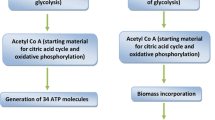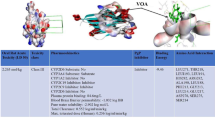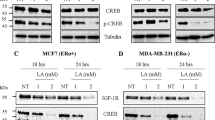Abstract
Estrogen receptor–positive mammary gland carcinoma and its involvement in regulation of overexpressed hypoxia-inducible factor-1α and fatty acid synthase level in hypoxia influenced cancer cells are the present molecular crosstalk of this entire study. To test the hypothesis, we have proceed our study through chemical activation of prolyl hydroxylase 2 which leads to inhibition of hypoxia-inducible factor-1α and fatty acid synthase in ER+MCF-7 cancer cell line and n-methyl-n-nitrosourea induced mammary gland carcinoma rat model. ER+MCF-7 cells were evident with array of nuclear changes when stained through acridine orange/ethidium bromide. Afterward, JC-1 staining of the cells was evident in mitochondrial depolarization. The cells were arrested in G2/M phase when analyzed with flow cytometry. The morphological analysis of rat mammary gland tissue revealed decrease in alveolar buds, restoration of histopathological features along with intra-arterial cushion. The western blotting and fold change expressions of the genes validating the anticancer efficacy of BBAPH-1 is mediated through mitochondria-mediated apoptosis pathway. BBAPH-1 also modulates the expression of prolyl hydroxylase-2 with significant curtailment of hypoxia-inducible factor-1α, fatty acid synthase expression, and their respective downstream markers. These finding suggest that the BBAP-1-mediated activation of prolyl hydroxylase-2 significantly decreased the level of hypoxia-inducible factor-1α and fatty acid synthase. BBAPH-1 also activates the mitochondria-mediated death apoptosis pathway.









Similar content being viewed by others
Abbreviations
- AO:
-
Acridine orange
- AB:
-
Alveolar buds
- BSA:
-
Bovine serum albumin
- CEC:
-
Cuboidal epithelial cells
- DTT:
-
Dithiothreitol
- DMSO:
-
Dimethyl sulphoxide
- DCT:
-
Dense connective tissue
- DF:
-
Differentiation score
- EtBr:
-
Ethidium bromide
- ECG:
-
Electrocardiogram
- EBSS:
-
Eagle’s balanced salt solution
- FASN:
-
Fatty acid synthase
- FBS:
-
Fetal bovine serum
- FACS:
-
Fluorescence-activated cell sorter
- GSH:
-
Glutathione
- HIF:
-
Hypoxia-inducible factor
- HRV:
-
Heart rate variability
- HR:
-
Heart rate
- H&E:
-
Hematoxylin and eosin
- HBSS:
-
Hank’s balanced salt solution
- HF:
-
High frequency
- LF:
-
Low frequency
- LCT:
-
Loose connective tissue
- MNU:
-
n-Methyl-n-nitrosourea
- MC:
-
Myoepithelial cells
- MTT:
-
3-(4,5-Dimethyl-2-thiazolyl)-2,5-diphenyl-2H-tetrazolium bromide
- OPD:
-
o-Phenylenediamine
- 2-OG:
-
2-Oxoglutarate
- PHD-2:
-
Prolyl hydroxylase-2
- PI:
-
Propidium iodide
- PC:
-
Protein carbonyl
- PBS:
-
Phosphate buffer saline
- ROS:
-
Reactive oxygen species
- SEM:
-
Scanning electron microscope
- SOD:
-
Superoxide dismutase
- TEST:
-
Toxicity estimation software tool
- TRU:
-
Turbidity reduction unit
- TBARs:
-
Thiobarbituric acid reactive substances
- VEGF:
-
Vascular endothelial growth factor
- pVHL:
-
von Hippel–Lindau
References
Besra SE, Ray M, Dey S, Roy S, Deb N (2013) Apoptogenic activity of secretion extract of Bellamya Bengalensis f. annandalei via mitochondrial mediated caspase cascade on human leukemic cell lines. Int J Pharm Sci Rev Res 20:146–152
Bovenga F, Sabbà C, Moschetta A (2015) Uncoupling nuclear receptor LXR and cholesterol metabolism in cancer. Cell Metab 21:517–526
Bratton SB, Salvesen GS (2010) Regulation of the Apaf-1–caspase-9 apoptosome. J Cell Sci 123:3209–3214
Buckley DL et al (2012) Targeting the von Hippel–Lindau E3 ubiquitin ligase using small molecules to disrupt the VHL/HIF-1α interaction. J Am Chem Soc 134:4465–4468
Cairns RA, Harris IS, Mak TW (2011) Regulation of cancer cell metabolism. Nat Rev Cancer 11:85–95
Carpini JD, Karam AK, Montgomery L (2010) Vascular endothelial growth factor and its relationship to the prognosis and treatment of breast, ovarian, and cervical cancer. Angiogenesis 13:43–58
Chan D, Giaccia A (2010) PHD2 in tumour angiogenesis. Br J Cancer 103:1–5
Choi H, Song BJ, Gong YD, Gwak W, Soh Y (2008) Rapid degradation of hypoxia-inducible factor-1α by KRH102053, a new activator of prolyl hydroxylase 2. Br J Pharmacol 154:114–125
Darby SC et al (2010) Radiation-related heart disease: current knowledge and future prospects. Int J Radiat Oncol Biol Phys 76:656
De Assis S, Warri A, Cruz MI, Hilakivi-Clarke L (2010) Changes in mammary gland morphology and breast cancer risk in rats. J Vis Exp. https://doi.org/10.3791/2260
Dey S, Roy S, Deb N, Sen KK, Besra SE (2013) Anti-carcinogenic activity of Ruellia tuberosa L.(Acanthaceae) leaf extract on hepatoma cell line & increased superoxide dismutase activity on macrophage cell lysate. Int J Pharm Pharm Sci 5:854–861
Ediriweera MK, Tennekoon KH, Samarakoon SR, Thabrew I, Dilip De Silva E (2016) A study of the potential anticancer activity of Mangifera zeylanica bark: evaluation of cytotoxic and apoptotic effects of the hexane extract and bioassay-guided fractionation to identify phytochemical constituents. Oncol Lett 11:1335–1344
Gautam S et al (2018a) DuCLOX-2/5 inhibition attenuates inflammatory response and induces mitochondrial apoptosis for mammary gland chemoprevention. Front Pharmacol 9:314
Gautam S et al (2018b) Rifaximin, a pregnane X receptor (PXR) activator regulates apoptosis in a murine model of breast cancer. RSC Adv 8:3512–3521
Goto Y et al (2015) UCHL1 provides diagnostic and antimetastatic strategies due to its deubiquitinating effect on HIF-1α. Nat Commun 6:6153
Hanahan D, Weinberg RA (2011) Hallmarks of cancer: the next generation. cell 144:646–674
Hassan M, Watari H, AbuAlmaaty A, Ohba Y, Sakuragi N (2014) Apoptosis and molecular targeting therapy in cancer. Biomed Res Int 2014:150845
Heddleston J, Li Z, Lathia J, Bao S, Hjelmeland A, Rich J (2010) Hypoxia inducible factors in cancer stem cells. Br J Cancer 102:789–795
Janson V, Johansson A, Grankvist K (2010) Resistance to caspase-8 and-9 fragments in a malignant pleural mesothelioma cell line with acquired cisplatin-resistance. Cell Death Dis 1:e78
Kuchnio A et al (2015) The cancer cell oxygen sensor PHD2 promotes metastasis via activation of cancer-associated fibroblasts. Cell Rep 12:992–1005
Kuttan R, Parrott D, Kaplan S, Fuller G (1979) Effect of ascorbic acid on prolyl hydroxylase activity, collagen hydroxylation and collagen synthesis in human synovial cells in culture. Res Commun Chem Pathol Pharmacol 26:337–345
Lakoski SG, Jones LW, Krone RJ, Stein PK, Scott JM (2015) Autonomic dysfunction in early breast cancer: incidence, clinical importance, and underlying mechanisms. Am Heart J 170:231–241
Lee S-H et al (2012) Runx2 protein stabilizes hypoxia-inducible factor-1α through competition with von Hippel-Lindau protein (pVHL) and stimulates angiogenesis in growth plate hypertrophic chondrocytes. J Biol Chem 287:14760–14771
Li G-H, Huang J-F (2012) CDRUG: a web server for predicting anticancer activity of chemical compounds. Bioinformatics 28:3334–3335
Manral C et al (2016) Effect of β-sitosterol against methyl nitrosourea-induced mammary gland carcinoma in albino rats. BMC Complement Altern Med 16:260
Mansour M et al (2011) Thiazolidinediones/PPARγ agonists and fatty acid synthase inhibitors as an experimental combination therapy for prostate cancer. Int J Oncol 38:537
McNeill L, Bethge L, Hewitson K, Schofield C (2005) A fluorescence-based assay for 2-oxoglutarate-dependent oxygenases. Anal Biochem 336:125–131
Melnikov F, Kostal J, Voutchkova-Kostal A, Zimmerman JB, Anastas PT (2016) Assessment of predictive models for estimating the acute aquatic toxicity of organic chemicals. Green Chem 18:4432–4445
Menendez JA (2010) Fine-tuning the lipogenic/lipolytic balance to optimize the metabolic requirements of cancer cell growth: molecular mechanisms and therapeutic perspectives. Biochimica et Biophysica Acta (BBA)-Molecular and Cell Biology of Lipids 1801:381–391
Menendez JA, Lupu R (2007) Fatty acid synthase and the lipogenic phenotype in cancer pathogenesis. Nat Rev Cancer 7:763–777
Menke M, Meister A, Schubert I (2000) N-Methyl-N-nitrosourea-induced DNA damage detected by the comet assay in Vicia faba nuclei during all interphase stages is not restricted to chromatid aberration hot spots. Mutagenesis 15:503–506
Munoz-Pinedo C, El Mjiyad N, Ricci J (2012) Cancer metabolism: current perspectives and future directions. Cell Death Dis 3:e248
Nagato T, Yoshida H, Yoshida A, Uehara Y (1980) A scanning electron microscope study of myoepithelial cells in exocrine glands. Cell Tissue Res 209:1–10
Nepal M, Gong YD, Park YR, Soh Y (2011) An activator of PHD2, KRH102140, decreases angiogenesis via inhibition of HIF-1α. Cell Biochem Funct 29:126–134
Paramashivam SK, Elayaperumal K, Natarajan B, Ramamoorthy M, Balasubramanian S, Dhiraviam KN (2015) In silico pharmacokinetic and molecular docking studies of small molecules derived from Indigofera aspalathoides Vahl targeting receptor tyrosine kinases. Bioinformation 11:73–84
Plante I, Stewart MK, Laird DW (2011) Evaluation of mammary gland development and function in mouse models. J Vis Exp (53):e2828
Rani A et al (2016) α-Chymotrypsin regulates free fatty acids and UCHL-1 to ameliorate N-methyl nitrosourea induced mammary gland carcinoma in albino wistar rats. Inflammopharmacology 24:277–286
Rani V et al (2018) Effects of minocycline and doxycycline against terbutaline induced early postnatal autistic changes in albino rats. Physiol Behav 183:49–56
Reddy PH (2013) Is the mitochondrial outermembrane protein VDAC1 therapeutic target for Alzheimer's disease? Biochim Biophys Acta (BBA) – Mol Basis Dis 1832:67–75
Reuter S, Gupta SC, Chaturvedi MM, Aggarwal BB (2010) Oxidative stress, inflammation, and cancer: how are they linked? Free Radic Biol Med 49:1603–1616
Riccardi C, Nicoletti I (2006) Analysis of apoptosis by propidium iodide staining and flow cytometry. Nat Protoc 1:1458–1461
Richert MM, Schwertfeger KL, Ryder JW, Anderson SM (2000) An atlas of mouse mammary gland development. J Mammary Gland Biol Neoplasia 5:227–241
Riyasdeen A et al (2014) Antiproliferative and apoptosis-induction studies of a metallosurfactant in human breast cancer cell MCF-7. RSC Adv 4:49953–49959
Rostkowski M, Spjuth O, Rydberg P (2013) WhichCyp: prediction of cytochromes P450 inhibition. Bioinformatics 29:2051–2052
Roy S et al (2017) Alpha-linolenic acid stabilizes HIF-1 α and downregulates FASN to promote mitochondrial apoptosis for mammary gland chemoprevention. Oncotarget 8:70049
Roy S et al (2018a) GLA supplementation regulates PHD2 mediated hypoxia and mitochondrial apoptosis in DMBA induced mammary gland carcinoma. Int J Biochem Cell Biol 96:51–62
Roy S, Singh M, Sammi SR, Pandey R, Kaithwas G (2018b) ALA-mediated biphasic downregulation of α-7nAchR/HIF-1α along with mitochondrial stress modulation strategy in mammary gland chemoprevention. J Cell Physiol 234(4):4015–4029
Sammi SR et al (2018) Galantamine attenuates N, N-dimethyl hydrazine induced neoplastic colon damage by inhibiting acetylcholinesterase and bimodal regulation of nicotinic cholinergic neurotransmission. Eur J Pharmacol 818:174–183
Seeger H, Huober J, Wallwiener D, Mueck A (2004) Inhibition of human breast cancer cell proliferation with estradiol metabolites is as effective as with tamoxifen. Horm Metab Res 36:277–280
Singh M, Devi U, Roy S, Gupta PS, Saraf SA, Kaithwas G (2016) Prolyl hydroxylase mediated inhibition of fatty acid synthase to combat tumor growth in mammary gland carcinoma. Breast Cancer 23(6):820-829
Singh L, Aldosary S, Saeedan AS, Ansari MN, Kaithwas G (2018a) Prolyl hydroxylase 2: a promising target to inhibit hypoxia-induced cellular metabolism in cancer cells. Drug Discov Today 23:1873–1882
Singh M, Devi U, Roy S, Gupta PS, Kaithwas G (2018b) Chemical activation of prolyl hydroxylase-2 by BBAP-1 down regulates hypoxia inducible factor-1α and fatty acid synthase for mammary gland chemoprevention. RSC Adv 8:12848–12860
Singleton RS et al (2014) OGFOD1 catalyzes prolyl hydroxylation of RPS23 and is involved in translation control and stress granule formation. Proc Natl Acad Sci 111:4031–4036
Soga T (2013) Cancer metabolism: key players in metabolic reprogramming. Cancer Sci 104:275–281
Su Y et al (2012) Prolyl hydroxylase-2 (PHD2) exerts tumor-suppressive activity in pancreatic cancer. Cancer 118:960–972
Temes E et al (2005) Activation of HIF-prolyl hydroxylases by R59949, an inhibitor of the diacylglycerol kinase. J Biol Chem 280:24238–24244
Uehara N, Yoshizawa K, Kuwata M, Tsubura A (2010) Animal models for retinitis pigmentosa induced by MNU; disease progression, mechanisms and therapeutic trials. Histol Histopathol 25:933–944
Valavanidis A, Vlachogianni T, Fiotakis K, Loridas S (2013) Pulmonary oxidative stress, inflammation and cancer: respirable particulate matter, fibrous dusts and ozone as major causes of lung carcinogenesis through reactive oxygen species mechanisms. Int J Environ Res Public Health 10:3886–3907
Yang C-b, Pei W-j, Zhao J, Cheng Y-y, Zheng X-h, Rong J-h (2014) Bornyl caffeate induces apoptosis in human breast cancer MCF-7 cells via the ROS-and JNK-mediated pathways. Acta Pharmacol Sin 35:113–123
Zhu K, Day T, Warshaviak D, Murrett C, Friesner R, Pearlman D (2014) Antibody structure determination using a combination of homology modeling, energy-based refinement, and loop prediction. Proteins: Structure, Function, and Bioinformatics 82:1646–1655
Funding
MS is supported by the University Grants Commission, Government of India, through senior research fellowship (RGNF-2013-14-SC-UTT-38150). SR is supported by the Department of Science and Technology, Government of India, through senior research fellowship (SB/EMEQ-254/2013).
Author information
Authors and Affiliations
Contributions
UD and MS carried out the bench work; SR performed the immunoblotting assay and cell culture; ACT performed the in silico studies; PSG evaluated all the data; SKS evaluated the in silico studies; MNA and ASS performed the statistical analysis of the data; GK supervised, designed, and proofread the final manuscript.
Corresponding author
Ethics declarations
The animal experimental procedures were approved by the Institutional Animal Ethics Committee (UIP/IAEC/2014/FEB/16), United Institute of Pharmacy, Allahabad, and performed as per the guidelines laid by Department of Animal Welfare, Government of India. Tumor
Consent for publication
Not applicable.
Competing interests
The authors declare that they have no competing interests.
Additional information
Publisher’s note
Springer Nature remains neutral with regard to jurisdictional claims in published maps and institutional affiliations.
Electronic supplementary material
Fig. S1:
Docking study and toxicity profile of BBAPH-1. BBAPH-1 was docked with PHD-2 protein (PDB id-2G19). The binding energy was found −3.97 kcal/mol. The hydrogen bond was observed between UNK 0: H1 and ARG 322: HH12 1. The amino acids attached to protein were LEU 343, VAL 376, TYR 303, HIS 374, TYR 310, MET 299, TRP 389, ASP 315, ARG 322.Toxicity profile of BBAPH-1 was estimated with TEST which revealed that BBAPH-1 was found to be non-mutagenic. (JPG 304 kb)
Fig. S2:
Metabolic profiling of BBAPH-1. The metabolic profiling of BBAPH-1 shows CYP450 mediated hydroxylation at 6th, 10th, 19th and 20th carbon position. (JPG 26 kb)
Fig. S3:
Representative ECG tracing of the animals treated with MNU and BBAPH-1. I- Control (0.9% normal saline, p.o.); II- Toxic control (MNU, 8 mg/kg, i.v.); III-BBAPH-1+ MNU (56.62 μg/kg, s.c + 8 mg/kg MNU, i.v.); IV- BBAPH-1+ MNU (113.25 μg/kg, s.c + 8 mg/kg MNU, i.v.). (JPG 494 kb)
Table S1
(DOCX 11 kb)
Table S2
(DOCX 11 kb)
Rights and permissions
About this article
Cite this article
Devi, U., Singh, M., Roy, S. et al. PHD-2 activation: a novel strategy to control HIF-1α and mitochondrial stress to modulate mammary gland pathophysiology in ER+ subtype. Naunyn-Schmiedeberg's Arch Pharmacol 392, 1239–1256 (2019). https://doi.org/10.1007/s00210-019-01658-7
Received:
Accepted:
Published:
Issue Date:
DOI: https://doi.org/10.1007/s00210-019-01658-7




